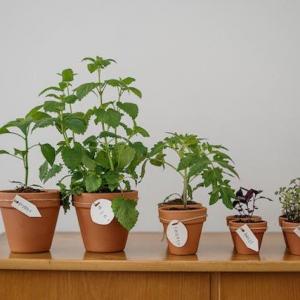
Introduction:
Preparing your garden for the winter season is essential to ensure that your plants, soil, and garden structures are protected from the harsh weather conditions. By taking the necessary steps to winterize your garden, you can set a solid foundation for a vibrant and thriving garden when spring arrives. In this article, we will explore some key tasks and tips for winterizing your garden to ensure a successful transition into the spring season.Clean Up and Clear Out:
Start by cleaning up your garden and removing any debris, fallen leaves, or dead plants. These can serve as hiding places for pests and diseases during the winter months. Clearing out the garden beds and removing weeds will prevent them from taking over your garden in spring. Dispose of any diseased or infested plant material to avoid spreading problems to healthy plants. Expanding on this point, consider pruning your trees, shrubs, and perennial plants as part of your cleanup process. Remove any dead or damaged branches to promote healthy growth and prevent potential hazards during winter storms. Make sure to research the specific pruning requirements for each plant, as some may benefit from late winter or early spring pruning.Protect Your Plants:
Protecting your plants from freezing temperatures and harsh weather conditions is crucial for their survival during winter. Consider using mulch to insulate the soil and protect plant roots from extreme temperatures. Apply a layer of organic mulch, such as straw or shredded leaves, around the base of plants to help retain moisture and regulate soil temperatures. Expanding on this point, certain plants may require additional protection, especially those that are more sensitive to cold temperatures. Consider covering them with burlap, frost blankets, or specialized plant covers to shield them from freezing temperatures and drying winds. This is particularly important for delicate perennials, young trees, and shrubs.Prepare Your Soil:
Preparing your soil before winter sets in is essential to ensure healthy plant growth in the spring. Consider adding organic matter, such as compost or well-rotted manure, to enrich the soil and improve its structure. This will provide essential nutrients for plants and enhance drainage, preventing waterlogging during winter rains.Expanding on this point, consider conducting a soil test to determine its pH level and nutrient content. This will help you identify any deficiencies and adjust the soil accordingly. Most plants prefer a slightly acidic to neutral pH level, so amendments like lime or sulfur may be necessary to achieve the optimal pH range.
Maintain Your Garden Structures:
Winter can be rough on garden structures such as fences, trellises, and supports. Take the time to inspect and repair any damaged or weakened structures before they worsen during the winter storms. Reinforce or replace loose posts, repair broken slats, and ensure that all supports are securely in place.Expanding on this point, consider protecting delicate garden structures, such as arbors or decorative elements, by wrapping them in burlap or covering them with tarps. This will prevent damage caused by heavy snow, ice, or strong winds.
Plan for Spring:
While winterizing your garden, take the opportunity to plan for the upcoming spring season. Research and select new plants, order seeds, and create a planting schedule. Consider any changes or improvements you want to make to your garden layout or design. Planning ahead will ensure that you are ready to hit the ground running as soon as the weather warms up.Expanding on this point, consider starting seeds indoors or in a greenhouse if you want to get a head start on your spring planting. This will give you a jumpstart on growing seedlings that can be transplanted into your garden once the frost danger has passed.
Protect Your Containers and Pots:
If you have garden containers and pots, it's important to protect them during the winter months. Freezing temperatures can cause pots to crack or break. To prevent this, move your containers to a sheltered area, such as a covered porch or garage. Alternatively, you can wrap them in bubble wrap or burlap to provide insulation. Elevate the pots off the ground using bricks or pot feet to allow for proper drainage and prevent waterlogging.Maintain Your Garden Tools:
Winter is an ideal time to clean and maintain your garden tools. Properly cleaning and storing your tools will help extend their lifespan and ensure they are in good working condition when spring arrives. Remove any dirt or debris from the tools, sharpen blades if necessary, and apply a light coat of oil to prevent rust. Store them in a dry and protected area, such as a shed or garage, to avoid exposure to moisture and harsh weather conditions.Provide Food and Water for Wildlife:
During the winter months, many animals struggle to find food and water sources. You can support local wildlife by providing supplemental food and water in your garden. Consider installing bird feeders and providing birdseed, suet, or nectar for birds. You can also leave out water sources, such as shallow dishes with fresh water, for birds and other animals to drink from. Creating a wildlife-friendly garden not only benefits the local ecosystem but also adds beauty and interest to your outdoor space.Conclusion:
Winterizing your garden involves various tasks to protect and prepare your plants, soil, garden structures, and containers for the harsh winter months. By cleaning up, protecting plants and containers, preparing the soil, maintaining garden tools, and providing food and water for wildlife, you can ensure that your garden remains healthy and ready for a successful spring season. So, take the time to winterize your garden and enjoy the beauty and abundance it will bring in the coming months.
Article
Be the first comment
Elite Article
560 Views
0
0














